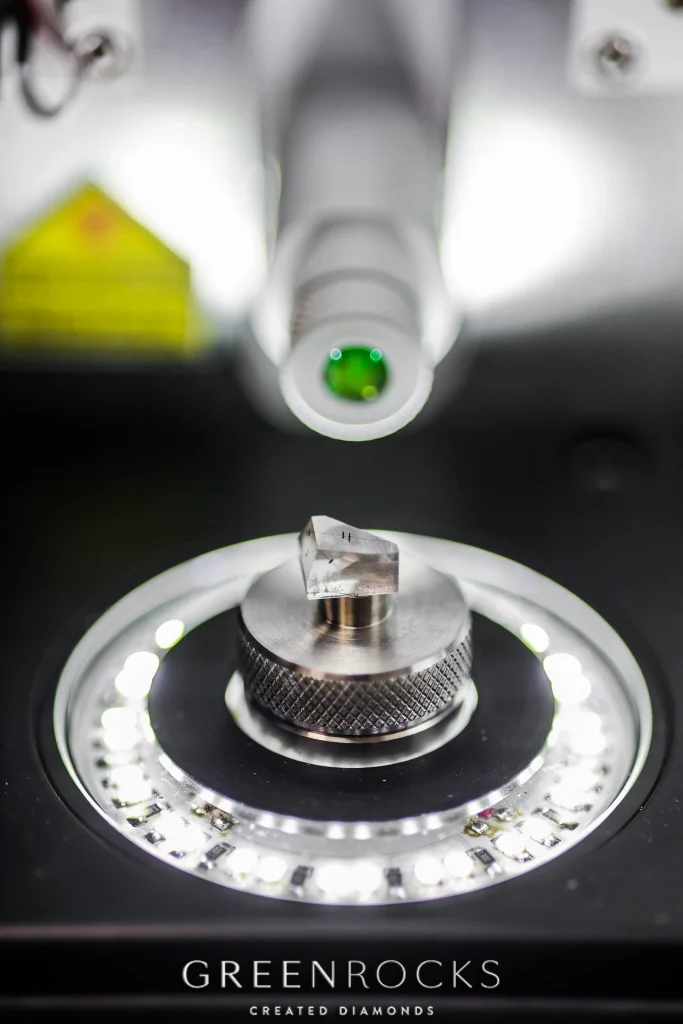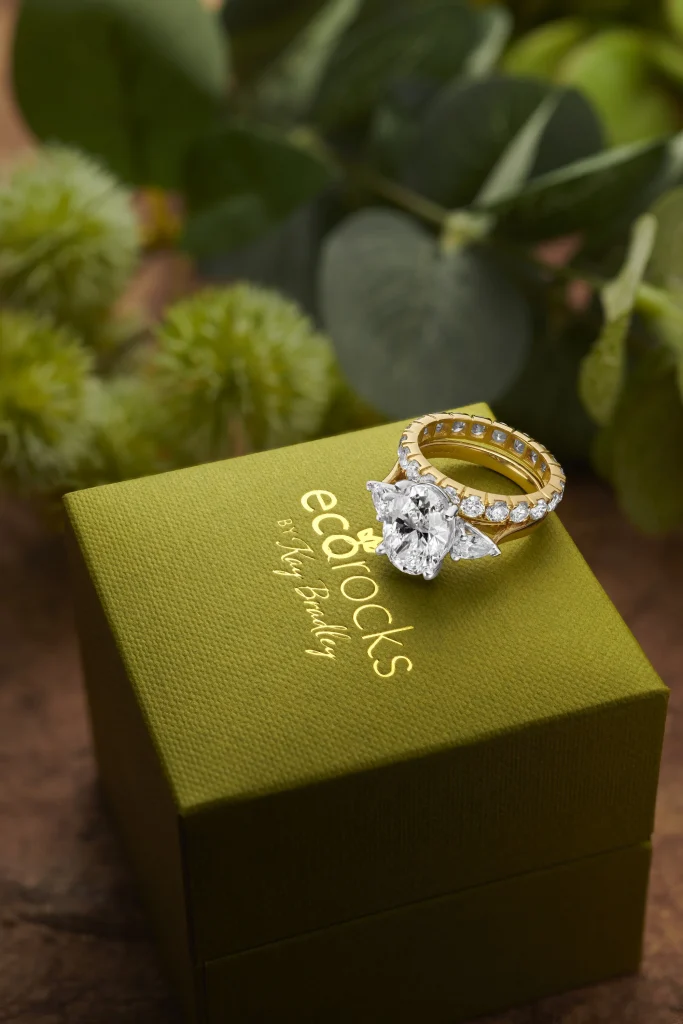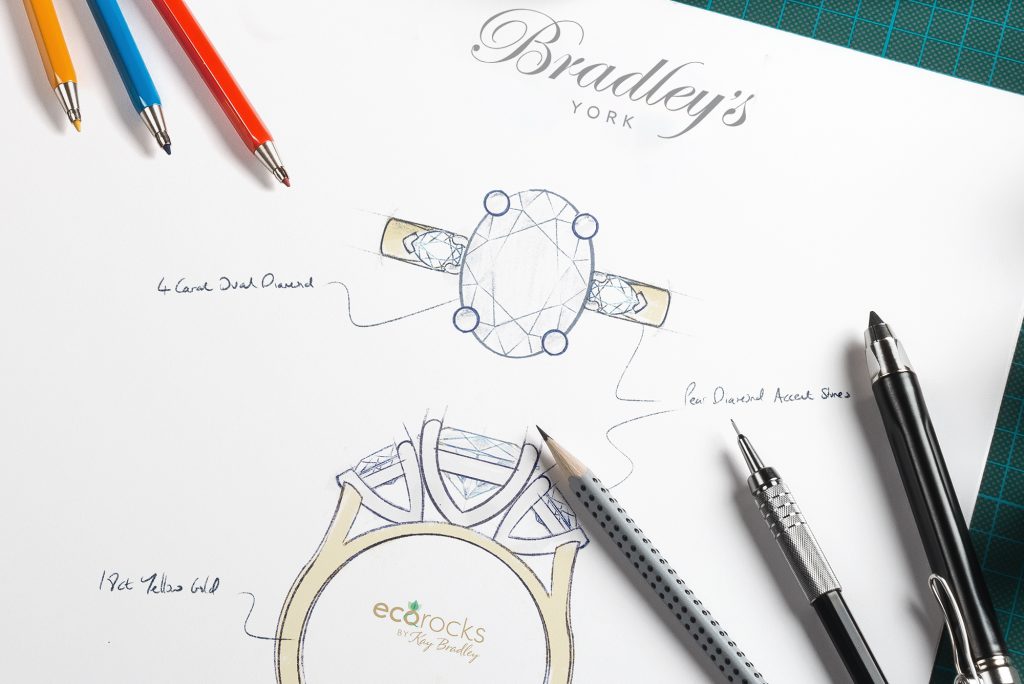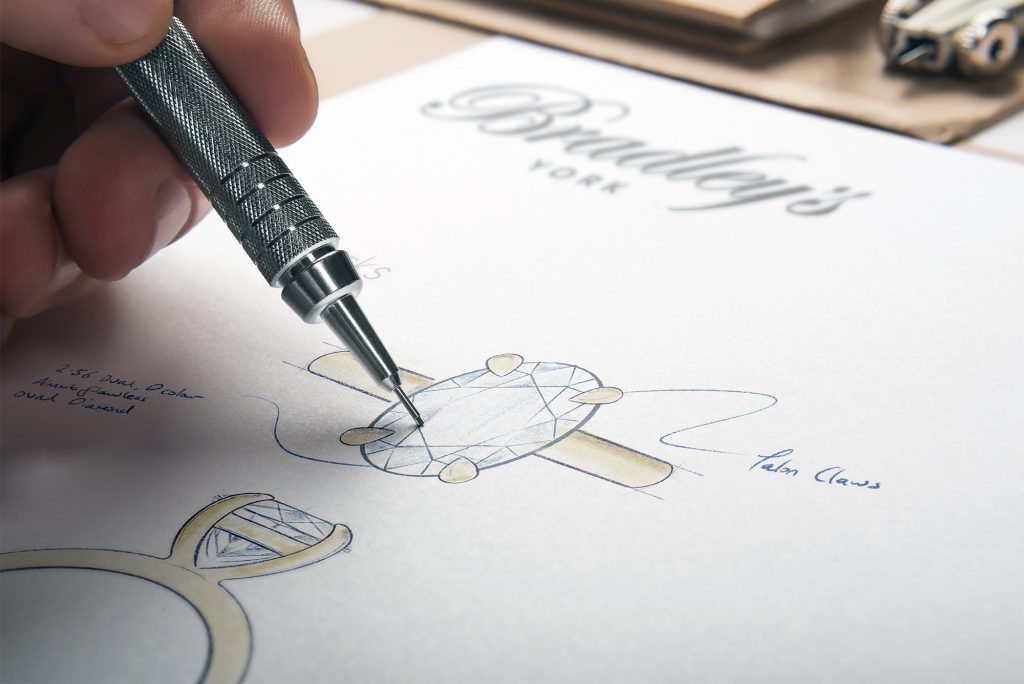What Is A
Laboratory-Grown Diamond
Laboratory-grown or ‘laboratory-created’ diamonds have essentially the same physical, chemical, and optical properties as natural diamonds mined from the earth. Thanks to incredible technology, diamonds can be created using processes that mimic the heat and pressure found deep beneath our feet. By recreating these conditions in a laboratory, diamonds can be made in a matter of weeks as opposed to over billions of years in nature.
Laboratory-grown diamonds are not the same as imitation stones, like cubic zirconia, which only pretend to be diamonds. When placed side by side, similarly graded laboratory-grown diamonds and natural diamonds will look identical and only a trained professional will be able to tell them apart.
How Do You
Grow a Diamond
The process of growing diamonds is one of the most precise and difficult manufacturing techniques that humans have ever achieved. To grow a gemstone quality diamond larger than one carat has taken man almost 60 years of development.
There are two key methods for creating diamonds: High Pressure-High Temperature (HPHT) and Chemical Vapor Deposition (CVD). Each process is best suited for certain sizes, shapes and colours of diamonds. You can’t tell whether a diamond has been created by either method just by looking with the naked eye, but a diamond expert may be able to.
CVD Diamonds
To grow a CVD diamond, diamond plates are placed into a vacuum chamber, which is carefully injected with a hydrocarbon gas, such as methane. High power microwave energy is used to break down the atomic bonds of hydrocarbon gas, which separates the carbon atoms from the hydrogen atoms. The ‘free’ carbon rains down on the diamond plates, vertically growing a diamond atom by atom, like the way snow collects in the winter.
HPHT Diamonds
HPHT diamond growth occurs within large pressure cookers called cubic presses, which can exert more than 70 metric tons! Small diamond seeds are carefully placed into the bottom of a growth cell. A layer of carbon, in the form of graphite, is then delicately placed on top of the diamond seeds. The growth cell is then placed into the centre of the cubic press and heated to 1,500 °C while being subjected to pressure that’s approximately 70,000 times the pressure at sea level. Under these conditions, the graphite is melted into a liquid and is cooled to form a diamond crystal.
Your Questions
Answered
Are laboratory-grown diamonds cheaper than natural diamonds?
Yes, they are more cost-effective and, depending on the size, colour and clarity, they can be up to 70% cheaper.
Are laboratory-grown diamonds ‘real’ diamonds?
Of course! The main and most significant difference is the origin of laboratory-grown diamonds – they are made by man and aren’t recovered from the earth like natural diamonds. However, chemically, physically and optically they have the same properties and are difficult to tell apart without specialist knowledge and equipment.
Which one is better, laboratory-grown diamonds or natural diamonds?
This isn’t something we can answer for you, it’s a very personal decision. Laboratory-grown diamonds and natural diamonds share the same physical, chemical, and optical properties, but they also come from very different origins and are priced differently. It is important to do your own research and choose based on the principles and factors that are unique to you.
Are laboratory-grown diamonds more environmentally friendly than natural diamonds?
This is a much-debated topic and, as with so many things, the answer is a lot more complicated than the question! At Bradley’s Jewellers, we love and respect both natural diamonds and laboratory-grown diamonds and just want to ensure our customers have the most varied choice for their special jewellery pieces. We have purposefully chosen to work with a laboratory-grown diamond supplier that is climate neutral and transparent about its environmental practices. This gives us peace of mind, which we can pass on to you.
“When I set out to design my own laboratory-grown diamond range, it was with a firm view that it would not replace natural diamonds, but rather complement them. As a qualified diamond and coloured stone grader, my passion has always been gemstones and that is reflected in the pieces I create. This new collection is all about giving my customers more choice of fine jewellery that caters to every budget,”
Choose From
The Collection
The Eco Rocks Collection includes a selection of single stone and trilogy engagement rings, cocktail rings, pendants, and earrings with laboratory-grown diamonds. Pieces are designed by Kay Bradley and made in Britain using traditional techniques. Eco Rocks also offers a selection of fancy-coloured and fancy-cut laboratory-grown diamonds so you can design and create your perfect jewellery piece.











Submit Your Questions
Want to know more about Lab Grown Diamonds? Contact our experienced team and we can answer all your questions.
